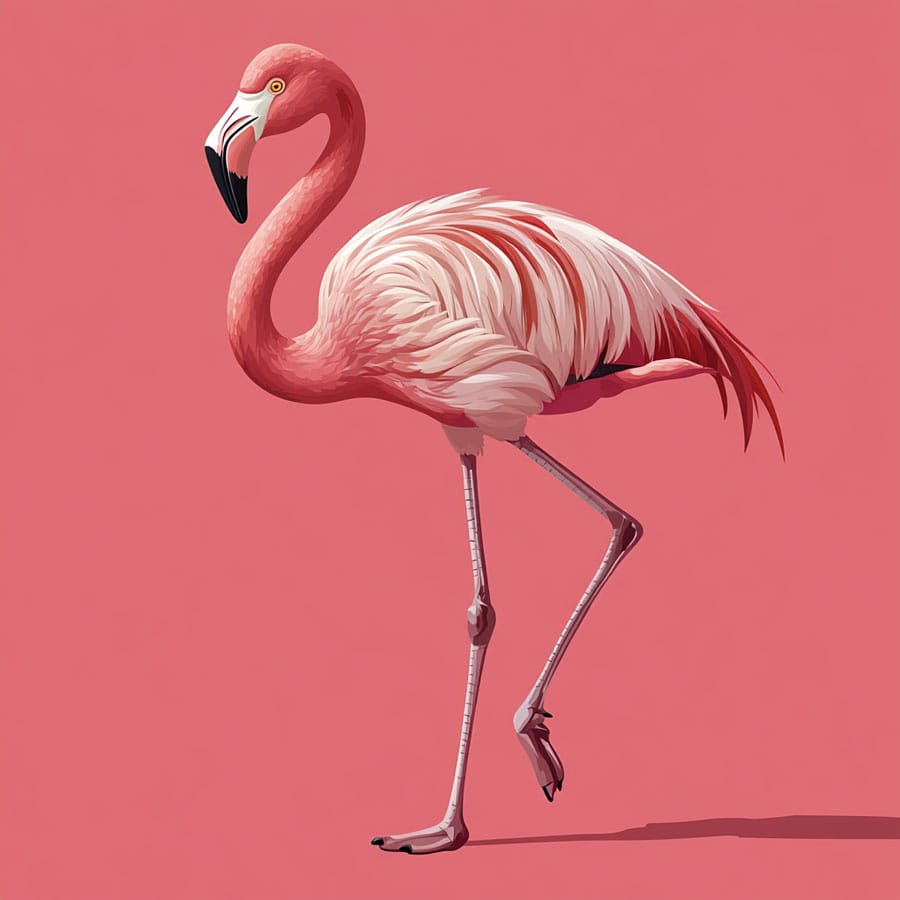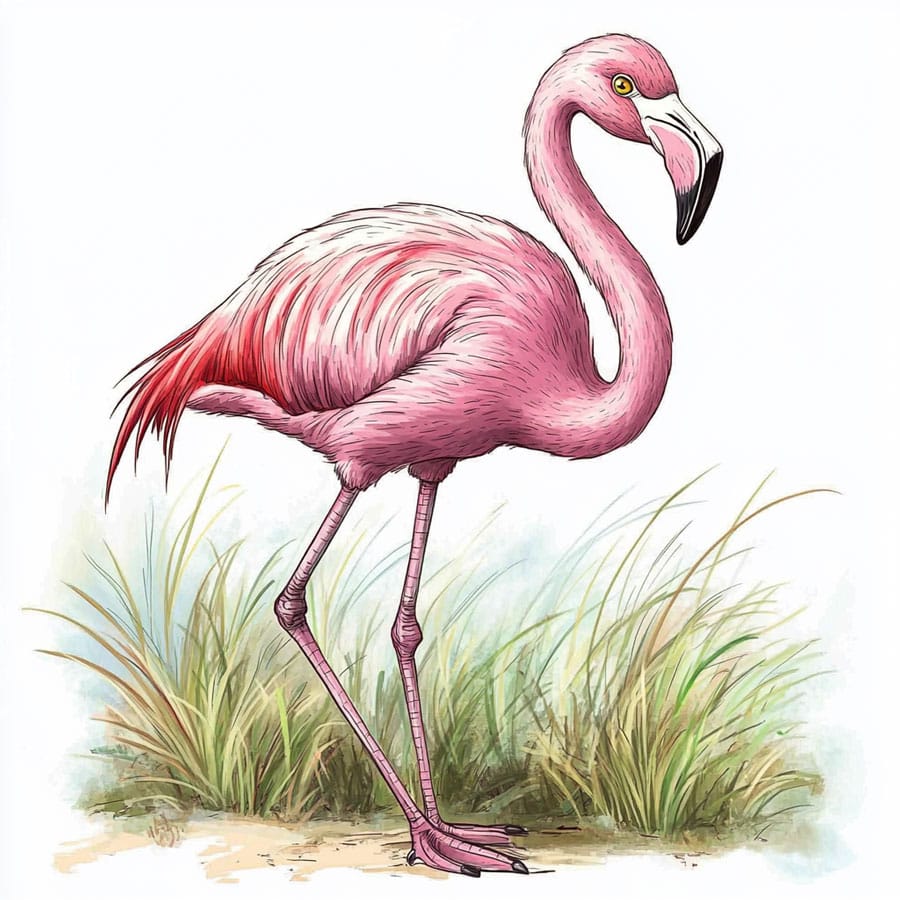To color this flamingo, it is advisable to use a range of colors that reflect its natural appearance. Flamingos typically have pink feathers that vary in intensity. You can start by coloring its body with a light pink tone and then add shadows with a darker pink to give it depth. The wing feathers can have a touch of white or light gray at the tips.
The beak is usually black at the tip and white or pale pink at the base. For the legs, use a light gray or pinkish tone. The flower can be in bright colors such as red or yellow, and the grasses in shades of green. The clouds can be colored with a very light blue or left white to contrast with the sky.
To add realism, it is important to pay attention to shadows and highlights. Use gradient techniques for the feathers and make sure the shadows are in the right areas, such as under the wings and on the legs.
Learn More About Flamingos
Flamingos are fascinating birds, well-known for their pink color and long legs. An interesting fact is that their pink color comes from their diet, which is rich in carotenoids found in the crustaceans and algae they consume.
Have you ever wondered why flamingos don’t fly away from zoos? It’s a very interesting question! Flamingos are migratory birds, meaning they often travel long distances in search of food. However, in zoos, they have everything they need to live, such as food and water. Additionally, the enclosures where they live are usually designed to mimic their natural habitat, providing them with a safe and comfortable environment.
Furthermore, their wings are safely clipped to prevent them from escaping, which does not cause pain and allows them to live in a controlled and secure environment. Zoos also provide an appropriate environment and a balanced diet that helps them maintain their color and health.
Want to learn more about flamingos? Click here.























